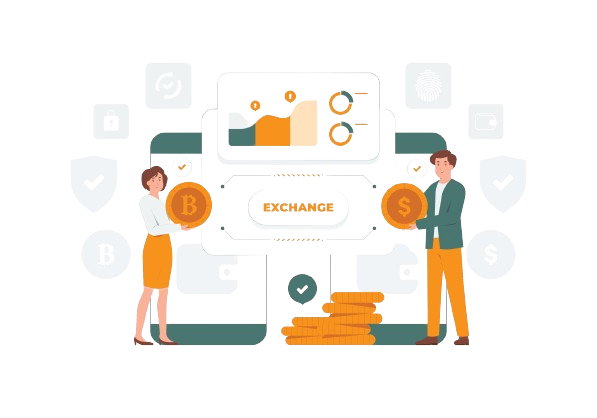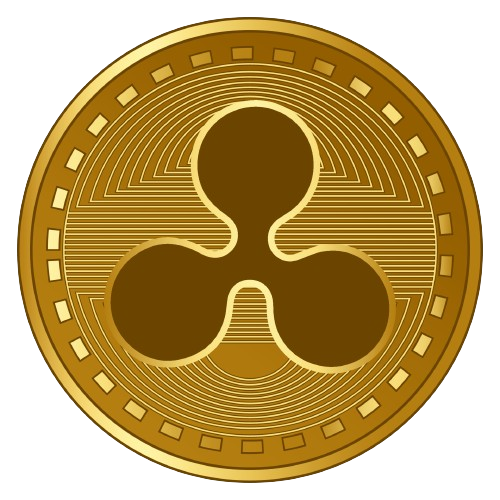
Bitcoin has long been the epitome of cryptocurrency, but it’s not the only digital coin making a splash in the market. As you dive deeper into the crypto, you’ll find that several other coins are making significant strides, each with its unique features and potential. Whether you’re new to crypto or have been around the block a few times, it’s worth taking a closer look at these rising stars. They’re not just alternatives to Bitcoin—they’re carving out their own space in the digital landscape.
Ethereum: The Smart Contract Pioneer
If you’ve been following crypto for a while, you’ve likely heard of Ethereum. But what exactly makes it so special? Well, unlike Bitcoin, which is primarily seen as digital gold, Ethereum is more like the Swiss Army knife of blockchain technology. It’s a platform that allows developers to build decentralized applications (DApps) and smart contracts—self-executing contracts with the terms directly written into code.
Ethereum has been a game-changer, especially when it comes to decentralized finance or DeFi. DeFi aims to create a new, open financial system that anyone can access, no matter where they are. And it’s all built on the Ethereum platform. If you’ve ever lent, borrowed, or traded crypto without needing a bank, you’ve likely experienced the power of DeFi.
But that’s not all. Ethereum is in the midst of a major upgrade known as ETH 2.0. This isn’t just a routine update—it’s a complete transformation that promises to make Ethereum more scalable, secure, and sustainable. This could mean faster transactions and a greener footprint, addressing some of the criticisms that have been levied against crypto in the past.
And let’s not forget about non-fungible tokens or NFTs. These unique digital assets, often representing art, music, or virtual real estate, have taken the world by storm. Ethereum’s blockchain is at the heart of this revolution, enabling creators and collectors to buy, sell, and trade NFTs with confidence. It’s opened up new opportunities for artists and given crypto a whole new audience.
Cardano: Sustainable Blockchain Solution

With the rise of crypto, sustainability has become a hot topic. Enter Cardano, a digital coin that’s been designed with this in mind from the get-go. If you’re someone who’s concerned about the environmental impact of crypto mining, Cardano might just be the coin for you.
Unlike many other cryptocurrencies that rely on energy-intensive proof-of-work mechanisms, Cardano uses a proof-of-stake system. What does that mean? Simply put, it’s a much more energy-efficient way of securing the blockchain. This makes Cardano a greener option, and it’s part of what sets it apart from the crowd.
But Cardano isn’t just about being eco-friendly. It’s also a powerful platform for smart contracts and decentralized applications, much like Ethereum. However, what makes Cardano truly stand out is its focus on real-world applications, particularly in regions that have traditionally been underserved by the global financial system.
Take Africa, for example. Cardano has been actively partnering with governments and organizations across the continent to bring blockchain technology to the forefront of solving everyday challenges. Whether it’s improving supply chain transparency or increasing access to financial services, Cardano is making a tangible impact. It’s not just about digital coins; it’s about creating real change.
Polkadot: Interoperability Champion
As the crypto market grows, so does the number of different blockchains. But there’s a problem—these blockchains often operate in silos, unable to communicate with each other. This is where Polkadot comes in, and it’s quickly becoming a key player for one simple reason: interoperability.
Polkadot is all about connecting different blockchains, allowing them to share information and work together. Think of it like the internet for blockchains—each blockchain can remain independent, but they can also collaborate, opening up possibilities.
One of Polkadot’s standout features is its use of parachains. These are individual blockchains that run alongside each other within the Polkadot network, each tailored for a specific purpose. Whether it’s speed, security, or smart contracts, parachains can be optimized for their intended use. This flexibility makes Polkadot a hotbed for innovation.
What’s more, Polkadot’s scalability is impressive. As the demand for blockchain technology grows, so does the need for systems that can handle a high volume of transactions. Polkadot’s architecture is designed to scale seamlessly, making it a strong contender in the race to become the go-to platform for decentralized applications.
Solana: High-Speed Blockchain
If speed is your thing, then Solana is a digital coin worth watching. In a world where transactions need to be quick and cost-effective, Solana has positioned itself as one of the fastest blockchains out there. It’s this speed that’s catching the attention of developers and investors alike.
Solana’s ability to process transactions at lightning speed makes it an attractive option for those building decentralized applications, especially in areas like finance, gaming, and social media. As more and more people turn to blockchain for these kinds of applications, Solana’s speed gives it a significant edge over slower networks.
But it’s not just about speed—Solana is also known for its growing ecosystem of decentralized applications. Developers are flocking to the platform because of its efficiency and low transaction costs, leading to a vibrant community of projects that are pushing the boundaries of what’s possible with blockchain technology.
Ripple (XRP): Revolutionising Cross-Border Payments

Cross-border payments have long been a headache for businesses and individuals alike. They’re often slow, expensive, and complicated. Ripple, however, is looking to change all that. It’s a digital coin that’s specifically designed to make international money transfers faster, cheaper, and more reliable.
One of Ripple’s biggest strengths is its ability to work seamlessly with existing financial institutions. Instead of trying to replace the traditional banking system, Ripple is aiming to enhance it. By partnering with banks and payment providers, Ripple is making cross-border transactions as easy as sending an email.
Ripple’s speed is also a major selling point. Traditional cross-border payments can take days to clear, but Ripple can complete transactions in mere seconds. This makes it an attractive option for businesses that need to move money quickly and efficiently, especially in a globalized economy where time is money.
Conclusion: The Diverse World of Digital Coins
As you can see, Cryptocurrency is much more than just Bitcoin. Ethereum, Cardano, Polkadot, Solana, and Ripple are all making waves in their unique ways, each offering something different to the market. Whether it’s Ethereum’s smart contracts, Cardano’s sustainability, Polkadot’s interoperability, Solana’s speed, or Ripple’s cross-border payment solutions, these digital coins are leading the charge in the next phase of the crypto revolution.
For anyone interested in the future of finance, these coins are worth paying attention to. They’re not just alternative investments—they’re shaping the way we think about money, technology, and the global economy. As the crypto space continues to grow, these digital coins are proving that there’s much more to the story than just Bitcoin. So, whether you’re a seasoned investor or just getting started, keep an eye on these rising stars—they might just change the world.